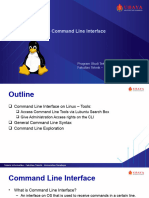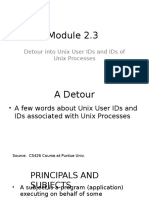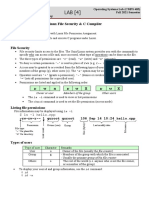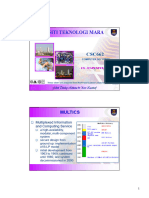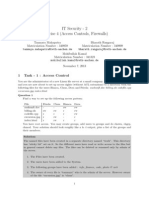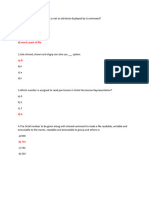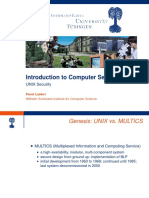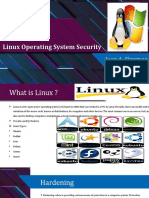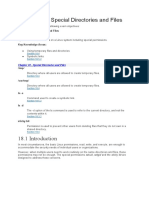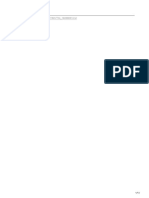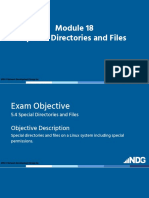0% found this document useful (0 votes)
36 views7 pagesAnswers - Task 3.1P - Unix - Linux Access Control
The document covers various topics related to Docker, operating system kernels, Unix/Linux access control, and file permissions. It explains the functionalities of Docker Engine, the differences between Docker containers and virtual machines, and details on file permissions using the chmod command. Additionally, it discusses SUID permissions and their implications for security and access control in Unix/Linux systems.
Uploaded by
lawrencekimutai001Copyright
© © All Rights Reserved
We take content rights seriously. If you suspect this is your content, claim it here.
Available Formats
Download as PDF, TXT or read online on Scribd
0% found this document useful (0 votes)
36 views7 pagesAnswers - Task 3.1P - Unix - Linux Access Control
The document covers various topics related to Docker, operating system kernels, Unix/Linux access control, and file permissions. It explains the functionalities of Docker Engine, the differences between Docker containers and virtual machines, and details on file permissions using the chmod command. Additionally, it discusses SUID permissions and their implications for security and access control in Unix/Linux systems.
Uploaded by
lawrencekimutai001Copyright
© © All Rights Reserved
We take content rights seriously. If you suspect this is your content, claim it here.
Available Formats
Download as PDF, TXT or read online on Scribd
/ 7

